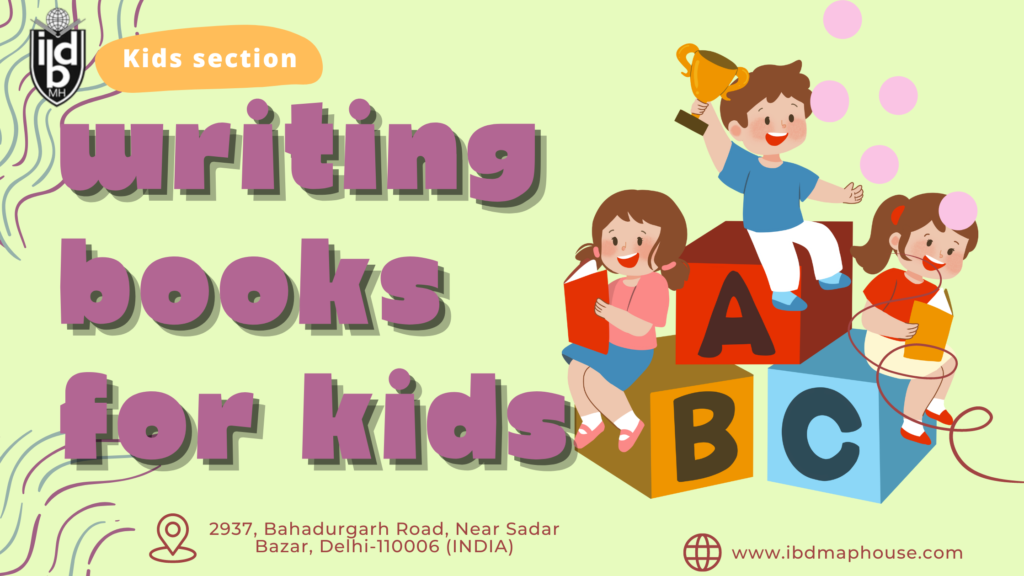In the age of digital learning, traditional handwriting may seem less important than ever, but it remains a critical part of a child’s development. For young learners, writing books are essential tools that help improve not only their handwriting but also their focus, fine motor skills, and cognitive abilities. Writing books for kids are specifically designed to guide them through the process of letter formation, neatness, and eventually, fluency in writing.
This article will explore the value of writing books for children, their types, and why they are still vital in today’s educational landscape.
Why Handwriting Still Matters
While it’s true that typing on keyboards and using touch screens are becoming more prevalent in schools and homes, writing by hand continues to be a fundamental skill. Numerous studies highlight the benefits of handwriting for children, linking it to better memory retention, learning engagement, and overall academic success.
Here’s why handwriting remains important for kids:
1. Improves Motor Skills: Handwriting helps kids develop fine motor control by requiring precise hand movements. Writing books guide them through letter shapes, helping them master control over pencils and pens.
2. Enhances Cognitive Development: Writing by hand has been shown to engage more areas of the brain compared to typing. It helps children learn language, grasp new concepts, and improve their reading comprehension as they see how letters and words connect.
3. Builds Patience and Focus: The process of handwriting requires attention to detail, patience, and focus. Writing books encourages kids to slow down and concentrate on forming letters correctly, which helps with other aspects of learning.
Types of Writing Books for Kids
There is no one-size-fits-all when it comes to writing books for kids. These books come in various formats, each targeting different skill levels and handwriting styles. Understanding the types of writing books available can help parents and educators choose the right one for their child’s needs.
1. Cursive Writing Books: For children who have already mastered basic handwriting, cursive writing books introduce them to the flow of cursive letters. Cursive helps with speed and fluency, making it an important step as kids advance in their writing skills.
2. Print Writing Books: These are ideal for young children just learning to write. They focus on helping children form individual letters correctly and consistently, offering plenty of space for practicing each letter of the alphabet.
3. Tracing Books: For preschoolers and early learners, tracing books are a great option. These books provide dotted or dashed outlines of letters for kids to trace, helping them learn the basic strokes and shapes before moving on to freehand writing.
4. Advanced Practice Workbooks: For older children or those who need extra practice, advanced workbooks offer exercises that include writing words, sentences, and paragraphs. These books provide more comprehensive exercises that challenge children to improve their handwriting over time.
Benefits of Writing Books
Writing books aren’t just about learning to write neatly—they also offer a wide range of developmental benefits for children:
1. Structure and Routine: Writing books typically follow a structured approach that gradually increases in difficulty, allowing children to build their skills step-by-step. This structured progression helps children develop a routine, making handwriting practice a consistent part of their daily activities.
2. Encouraging Independent Learning: Writing books allows children to practice at their own pace. They can repeat exercises as needed, giving them the freedom to improve without pressure.
3. Promoting Self-Esteem: Mastering handwriting is a source of pride for young learners. As they see their progress in a writing book, their self-esteem grows. Completing pages of neat writing builds confidence and a sense of achievement.
Choosing the Right Writing Book
When selecting a writing book for your child, it’s essential to consider their age, learning stage, and individual needs. A few things to keep in mind:
Age Appropriateness: Ensure the book is designed for your child’s age group. Younger kids will need books with larger letters and simpler exercises, while older children may require more advanced content.
Focus on Specific Skills: Whether your child is learning to write in print, cursive, or needs help with spacing and neatness, there’s a writing book tailored for each of these areas.
Engagement: Writing books with colorful illustrations, engaging themes, or reward systems can make handwriting practice more fun, keeping kids motivated.
Conclusion
Writing books for kids is invaluable in fostering early handwriting skills and providing a foundation for future academic success. Beyond improving the mechanics of writing, they help children develop patience, concentration, and confidence. As parents and educators strive to balance traditional learning with digital tools, writing books remain an essential resource for nurturing a child’s overall development.
In an increasingly digital world, the timeless skill of handwriting still holds significant importance, and writing books offer a simple, effective way for children to practice and perfect it.

